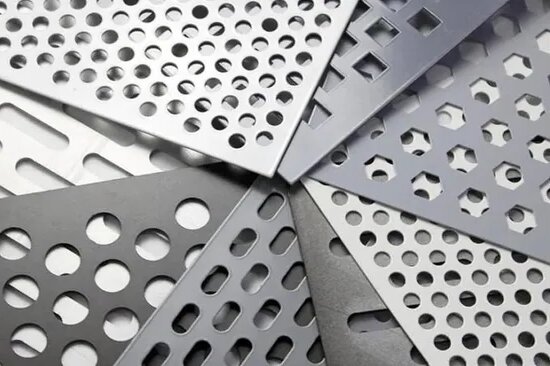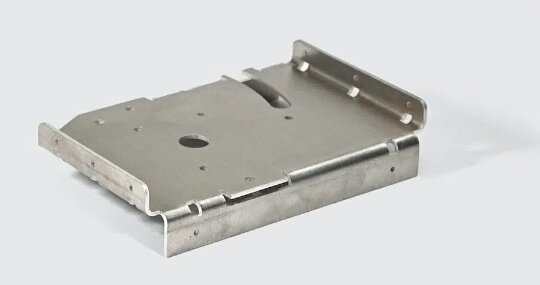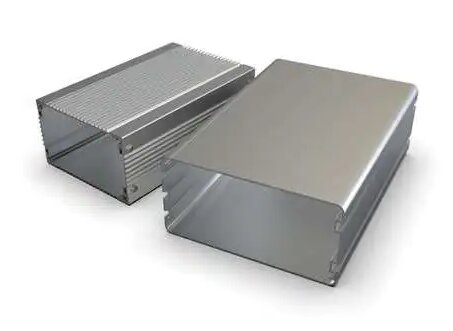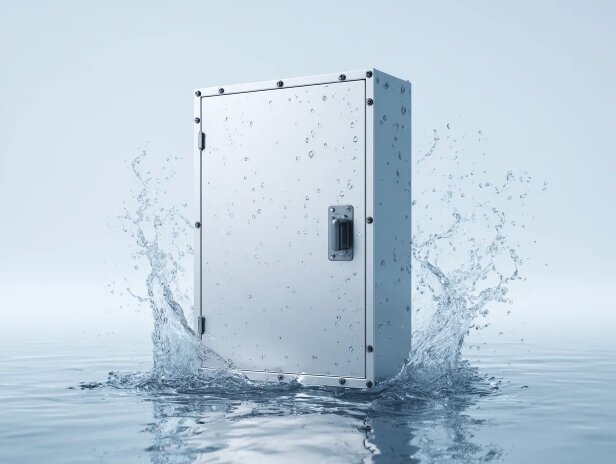Am Anfang jedes Produkts steht eine Idee - eine Form, ein Muster oder ein kleines Detail, das sein Aussehen und seine Haptik bestimmt. Für viele Designer und Ingenieure besteht die eigentliche Herausforderung darin, diese Idee in etwas zu verwandeln, das sowohl funktional als auch attraktiv ist. Sie brauchen Teile, die technischen Standards entsprechen und gleichzeitig Kreativität und handwerkliches Können zeigen.
Laserschneiden und Gravieren machen dies möglich. Diese beiden Verfahren arbeiten zusammen - das eine formt das Teil, das andere fügt Details hinzu. Durch die Kombination dieser beiden Verfahren entstehen Teile, die präzise, stabil und charaktervoll sind. Von modernen Gehäusen und Namensschildern bis hin zu kundenspezifischen Tafeln und Markenartikeln - diese Kombination verleiht Ihren Designs sowohl Funktion als auch Persönlichkeit.
In diesem Artikel gehen wir darauf ein, wie die Kombination dieser Verfahren die Gestaltungsmöglichkeiten erweitern kann. Sie erfahren, wie sich Laserschneiden und Gravieren gegenseitig ergänzen, wie sie die Produktion reibungsloser gestalten und wie sie einfache Materialien in außergewöhnliche Produkte verwandeln können.
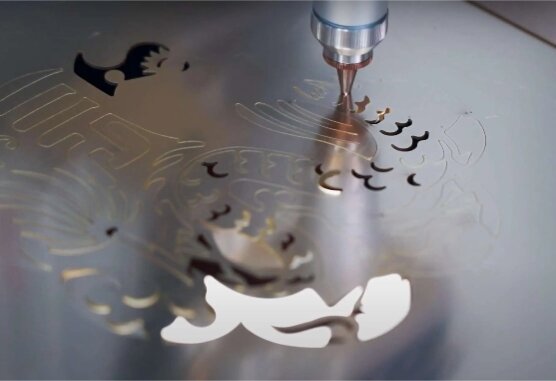
Was das Laserschneiden und das Gravieren jeweils zu bieten haben?
Laserschneiden und Gravieren spielen in der modernen Fertigung unterschiedliche, aber sich ergänzende Rollen. Beide Verfahren bieten spezifische Vorteile, die sowohl die Designergebnisse als auch die Produktionseffizienz verbessern.
Laserschneiden - sauber, präzise und vielseitig
Beim Laserschneiden wird ein fokussierter Lichtstrahl verwendet, um Materialien mit hoher Genauigkeit zu durchtrennen. Das Ergebnis sind glatte Kanten ohne Grate oder Werkzeugspuren, so dass die Teile sofort für die Montage oder Endbearbeitung bereit sind. Aufgrund seiner Präzision eignet sich das Verfahren sowohl für Prototypen als auch für die Großserienproduktion.
Diese Methode eignet sich für viele Materialien wie Metalle, Acryl und Holz. Komplexe Formen, enge Toleranzen und feine Details lassen sich problemlos verarbeiten. Da das Verfahren keinen physischen Kontakt erfordert, gibt es nur minimale Wärmeverformung oder mechanische Belastung. Das bedeutet, dass jedes Teil von Anfang bis Ende gleich bleibt.
Für Designer bedeutet dies die Freiheit, komplexe Formen zu entwerfen, ohne sich Gedanken über Werkzeugbeschränkungen machen zu müssen. Für die Hersteller bedeutet es zuverlässige Genauigkeit, schnellere Produktion und weniger Materialabfall.
Lasergravur - Details und Individualität hinzufügen
Bei der Lasergravur liegt der Schwerpunkt auf Oberflächendetails und nicht auf dem Durchschneiden des Materials. Es wird eine dünne Schicht abgetragen, um Text, Logos, Strichcodes oder dekorative Designs zu erstellen.
Eine Gravur ist nicht nur optisch ansprechend, sondern hat auch eine praktische Funktion. Sie erzeugt dauerhafte, verschleißfeste Markierungen, die mit der Zeit nicht verblassen oder abblättern. Außerdem können subtile Strukturen aufgebracht werden, die die Griffigkeit verbessern oder bestimmte Merkmale hervorheben.
Dieses Verfahren verleiht jedem Teil eine persönliche Note und macht es gleichzeitig haltbar. Für Unternehmen ist es eine schnelle Möglichkeit, Branding, Identifizierung und Rückverfolgbarkeit in einem einzigen reibungslosen Vorgang zu kombinieren.
Warum Laserschneiden und Gravieren kombinieren?
Wenn Laserschneiden und Gravieren zusammen eingesetzt werden, wird die Produktion effizienter, kreativer und anpassungsfähiger. Die beiden Methoden ergänzen sich perfekt, sparen Zeit und verbessern sowohl das Aussehen als auch die Leistung des Endprodukts.
Nahtlose Design- und Funktionsintegration
Die Verwendung einer Maschine für das Schneiden und Gravieren sorgt für einen präzisen und unkomplizierten Arbeitsablauf. Die Teile müssen nicht zwischen den Maschinen hin- und herbewegt oder neu ausgerichtet werden, was Einrichtungszeit spart und Fehler reduziert. Ein einziges Programm kann sowohl die Form als auch die Oberflächendetails definieren, sodass alles einheitlich bleibt.
Dieses System gibt Designern auch mehr Freiheit. Sie können komplexe Formen ausschneiden und im selben Arbeitsschritt Text, Logos oder Markierungen eingravieren. Der Prozess läuft schneller und reibungsloser ab und eignet sich daher gut für individuelle Aufträge, kleine Auflagen oder Projekte, die schnell geändert werden müssen.
Designflexibilität für individuelle Projekte
Die Kombination dieser beiden Techniken eröffnet neue kreative Möglichkeiten. Designer können Schichten von Tiefe, Textur und Details hinzufügen, die separat zeitaufwändig oder teuer wären. Eingravierte Linien oder strukturierte Oberflächen können einfache Teile in visuell auffällige Produkte verwandeln.
Es ist auch eine intelligente Methode, um ein einheitliches Branding zu gewährleisten. Logos, Seriennummern und Symbole können direkt auf jedes Teil eingraviert werden, so dass jede Komponente einheitlich aussieht. Ganz gleich, ob Sie einen einzelnen Prototyp oder eine ganze Produktionscharge herstellen, jedes Teil weist die gleiche Genauigkeit, Detailgenauigkeit und Identität auf.
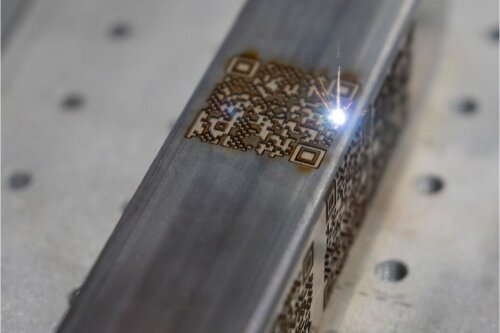
Anwendungen in Produktdesign und Branding
Laserschneiden und -gravieren eröffnen eine breite Palette an kreativen und praktischen Möglichkeiten. Sie helfen, einfache Metall- oder Acrylteile in fertige, markengeschützte und leicht zu verfolgende Produkte zu verwandeln.
Logo und Markenelemente
Eingravierte Logos auf lasergeschnittenen Teilen verleihen Produkten ein sauberes, professionelles und langlebiges Aussehen. Diese Markierungen verblassen nicht, blättern nicht ab und nutzen sich nicht ab, auch nicht in rauen Umgebungen. Sie ermöglichen es Marken, einen bleibenden Eindruck auf jedem Produkt zu hinterlassen.
Für Unternehmen sind gravierte Markenzeichen ein Zeichen für Präzision und Sorgfalt in der Produktion. Es schafft Vertrauen und stärkt den Wiedererkennungswert der Marke, indem es sicherstellt, dass jedes Teil einheitlich aussieht. Ob auf einem Gehäuse, Bedienfeld, oder kleines BauteilDie eingravierten Details vermitteln ein Gefühl von Qualität, das die Kunden sehen und fühlen können.
Dekorative Gestaltungsmerkmale
Mit der Lasergravur lassen sich auch künstlerische Merkmale direkt auf die Teile aufbringen. Designer können Muster, Texturen oder feine Details erstellen, die Tafeln, Abdeckungen und Displays optisch interessant machen.
Bei diesem Verfahren werden Design und Technik zusammengeführt. Ein lasergraviertes Muster kann eine einfache Oberfläche in ein einzigartiges, ins Auge fallendes Merkmal verwandeln. Außerdem lässt es sich leicht anpassen und verleiht jedem Produkt oder Kunden ein unverwechselbares und hochwertiges Finish ohne zusätzliche Werkzeuge oder Einstellungen.
Funktionelle Markierungen
Gravuren dienen nicht nur der Dekoration, sondern haben auch eine praktische Funktion. Dauerhafte Seriennummern, Skalenmarkierungen oder Etiketten helfen den Anwendern, Produkte korrekt zu identifizieren, zu montieren und zu warten.
In Produktionsumgebungen verbessern eingravierte Details die Rückverfolgbarkeit. Sie erleichtern die Rückverfolgung von Teilen in jeder Phase - von der Produktion bis zur Inspektion und Wartung. Da diese Kennzeichnungen dauerhaft sind, bleiben sie während der gesamten Lebensdauer des Produkts deutlich und lesbar, auch nach längerem Gebrauch oder wiederholter Reinigung.
Shengens Kompetenz im Laserschneiden und -gravieren
Shengen hat sich auf die Herstellung von lasergeschnittenen und gravierten Teilen für eine Vielzahl von Branchen spezialisiert, von der Unterhaltungselektronik bis hin zu Industrieanlagen. Ganz gleich, ob Sie einen einzelnen Prototyp oder eine ganze Produktionscharge benötigen, unser Verfahren liefert jedes Mal gleichbleibende Präzision.
Wir verwenden moderne Faser- und CO₂-Lasersysteme, um Metalle wie Edelstahl, Aluminium und Messing mit außergewöhnlicher Genauigkeit zu schneiden und zu gravieren. Unsere erfahrenen Ingenieure passen Leistung, Geschwindigkeit und Tiefe sorgfältig an, um glatte Kanten und scharfe Gravurergebnisse zu erzielen. Diese Liebe zum Detail ermöglicht es uns, Teile mit komplexen Formen, feinen Markierungen und hoher visueller Qualität herzustellen.
Jedes Projekt folgt einem effizienten Arbeitsablauf, der darauf ausgelegt ist, Zeit zu sparen und die Konsistenz zu verbessern. Schneiden und Gravieren werden in der gleichen Einrichtung durchgeführt, was die Handhabung reduziert, eine perfekte Ausrichtung gewährleistet und die Produktion von Anfang bis Ende reibungslos ablaufen lässt.
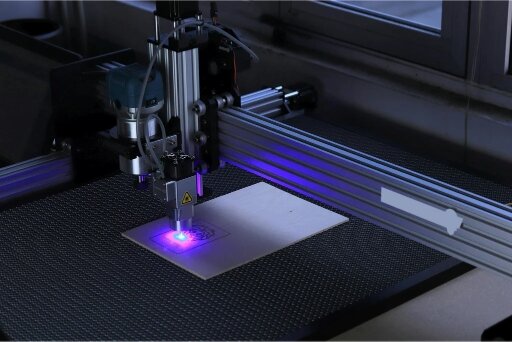
Design-Tipps für beste Ergebnisse
Laserschneiden und -gravieren bieten hervorragende Genauigkeit und Flexibilität, aber die besten Ergebnisse werden durch kluge Designentscheidungen erzielt. Materialauswahl, Maschineneinstellungen und Designintegration wirken sich alle auf die Qualität, das Aussehen und die Leistung des fertigen Teils aus.
Wählen Sie das richtige Material
Jedes Material reagiert anders auf die Laserbearbeitung. Edelstahl liefert saubere Schnitte und feine Gravuren mit einem matten, professionellen Finish. Er ist haltbar und ideal für Gehäuse, Namensschilder und Teile, die sowohl robust als auch glänzend aussehen sollen.
Aluminium ist leicht und gut hitzebeständig und eignet sich daher perfekt für schnelle Schnitte und detaillierte Gravuren. Es wird häufig für Schilder, Frontplatten und Gehäuse von Konsumgütern verwendet. Messing mit seinem warmen Goldton verleiht gravierten Teilen ein hochwertiges Aussehen. Es ist eine beliebte Wahl für dekorative Komponenten oder hochwertige Branding-Elemente.
Einstellen von Tiefe und Leistung
Die Tiefe und Klarheit der Gravur hängt von der Laserleistung, der Geschwindigkeit und dem Fokus ab. Eine höhere Leistung erzeugt tiefere Gravuren, die sich stärker abheben, während niedrigere Einstellungen besser für feinen Text oder leichte Oberflächendetails geeignet sind. Bei Metallteilen verbessern tiefere Gravuren die Sichtbarkeit und Haltbarkeit. Bei Acryl- oder Kunststoffteilen helfen niedrige Einstellungen, Schmelzen oder Oberflächenschäden zu vermeiden.
Auch der Fokus des Strahls spielt eine wichtige Rolle. Ein scharfer Fokus erzeugt feine Linien und scharfe Details, während ein leicht defokussierter Strahl Textur oder ein weicheres Finish erzeugt. Das Testen eines kleinen Musters vor der vollen Produktion hilft, das richtige Gleichgewicht zwischen Tiefe, Schärfe und Aussehen zu finden.
Kombinieren Sie Funktion und Ästhetik
Ein gutes Laserdesign verbindet Leistung und Aussehen. Das Gravieren von Teilenummern, Anweisungen oder Markenzeichen direkt auf die Oberfläche ersetzt gedruckte oder angebrachte Etiketten. Das ist schneller, sauberer und langlebiger.
Bedienfelder, Schalterabdeckungen und kundenspezifische Gehäuse können mit eingravierten Markierungen oder Symbolen versehen werden, um die Benutzerfreundlichkeit zu verbessern und gleichzeitig ein glattes, integriertes Aussehen zu erhalten. Dieser Ansatz spart Zeit, reduziert den Montageaufwand und verleiht den Produkten ein professionelles Finish, das sich abhebt.
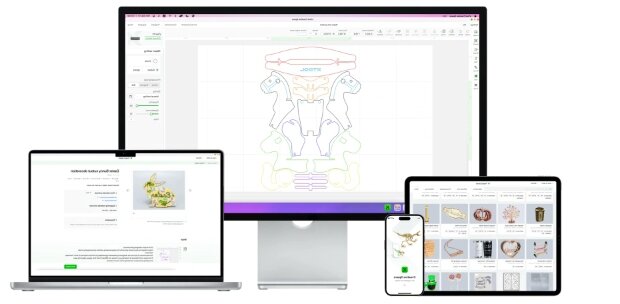
Wie Sie Ihr eigenes Projekt starten?
Der Start eines Laserschneid- und Gravurprojekts ist einfach, wenn alles genau geplant ist. Je detaillierter Ihre Entwurfsinformationen sind, desto reibungsloser und schneller wird der Prozess verlaufen.
Welche Informationen Sie vorbereiten müssen?
Beginnen Sie mit der Vorbereitung Ihrer Vektorzeichnungen im DXF-, DWG- oder AI-Format. Diese Dateien ermöglichen es dem Laser, sowohl beim Schneiden als auch beim Gravieren präzisen Pfaden zu folgen. Beschriften Sie jede Ebene eindeutig, z. B. eine für Schnittlinien und eine andere für Gravurbereiche, damit bei der Einrichtung nichts durcheinander kommt.
Bestimmen Sie als Nächstes den Materialtyp und die Materialstärke. Edelstahl bietet ein elegantes industrielles Aussehen und eine hervorragende Haltbarkeit. Aluminium ist leicht und lässt sich gut gravieren. Acryl und Messing eignen sich ideal für dekorative oder Branding-Anwendungen. Wenn Sie ein bestimmtes Aussehen wünschen, notieren Sie Ihre bevorzugte Oberflächengüte, wie zum Beispiel gebürstet, poliert, oder pulverbeschichtet.
Zeigen Sie schließlich an, wo Sie die Gravuren auf Ihren Zeichnungen platzieren möchten. Markieren Sie die Positionen von Logos, Seriennummern oder Texturen. Fügen Sie Hinweise zur Gravurtiefe oder zum Kontrast hinzu, damit unsere Techniker Ihre Designvorstellungen genau umsetzen können.
Zusammenarbeit mit Shengen
Sobald Sie uns Ihre Zeichnungen und Materialangaben mitgeteilt haben, überprüfen unsere Ingenieure Ihren Entwurf sorgfältig, um qualitativ hochwertige Ergebnisse zu gewährleisten. Wir prüfen Faktoren wie Linienbreite, Abstände und Toleranzen, um sicherzustellen, dass das Teil sauber geschnitten und scharf graviert werden kann. Wenn wir Möglichkeiten zur Verbesserung des Designs oder des visuellen Effekts sehen, machen wir Ihnen unkomplizierte, praktische Vorschläge.
Vor der Massenproduktion können wir auch ein Musterteil zu Testzwecken herstellen. So können Sie die Gravurtiefe, die Klarheit und das Finish überprüfen, bevor Sie die endgültige Charge bestätigen. Etwaige Anpassungen können schnell vorgenommen werden, um sicherzustellen, dass Ihre Teile Ihren Erwartungen an Funktion und Aussehen entsprechen.
Laden Sie Ihre Zeichnungen hoch oder teilen Sie Ihre Ideen mit unserem technischen Team. Wir empfehlen Ihnen die besten Materialien und Gravurverfahren und unterbreiten Ihnen dann ein schnelles, genaues Angebot. Kontaktieren Sie uns heute um Ihr individuelles lasergeschnittenes und graviertes Musterteil zu erhalten.
Hey, ich bin Kevin Lee
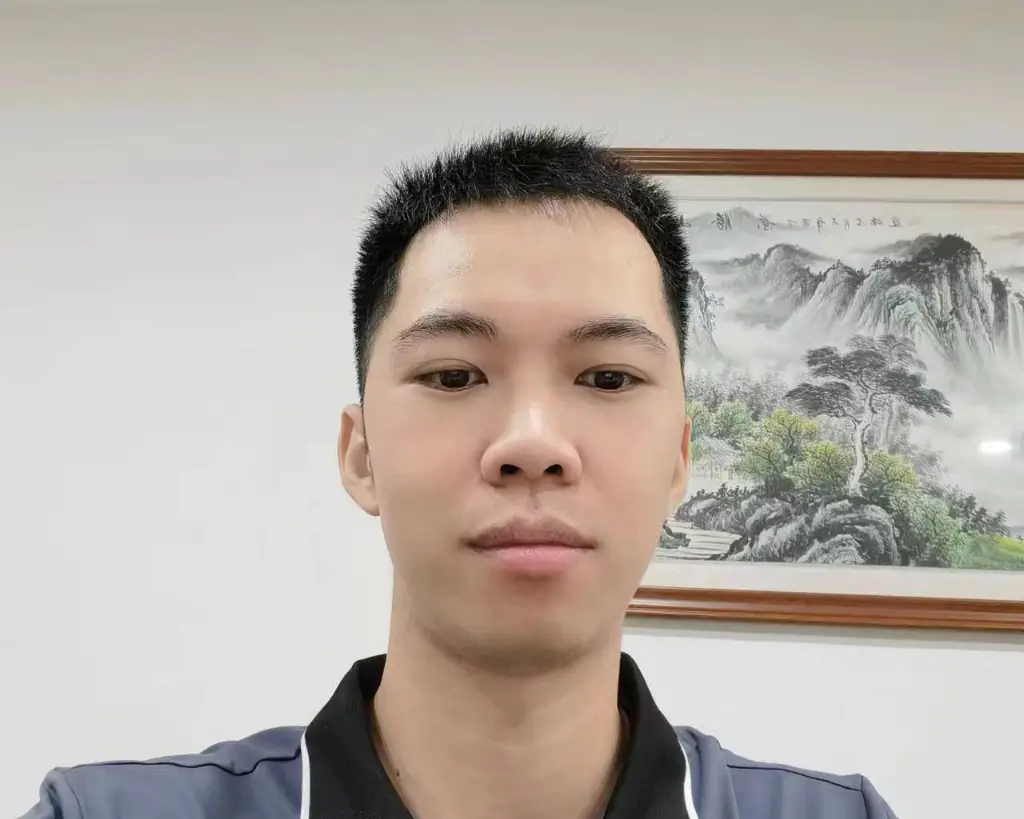
In den letzten 10 Jahren bin ich in verschiedene Formen der Blechbearbeitung eingetaucht und teile hier coole Erkenntnisse aus meinen Erfahrungen in verschiedenen Werkstätten.
Kontakt aufnehmen

Kevin Lee
Ich verfüge über mehr als zehn Jahre Berufserfahrung in der Blechverarbeitung und bin auf Laserschneiden, Biegen, Schweißen und Oberflächenbehandlungstechniken spezialisiert. Als Technischer Direktor bei Shengen bin ich bestrebt, komplexe Fertigungsherausforderungen zu lösen und Innovation und Qualität in jedem Projekt voranzutreiben.

